Cistus Ladanifer: The Fragrant Shrub That Can Thrive In Your Garden
Cistus ladanifer: The Fragrant Shrub That Can Thrive in Your Garden
Cistus ladanifer, also known as gum rockrose, is a fragrant shrub that is native to the western Mediterranean region. It is a popular ornamental plant, grown for its strongly resin-scented foliage and conspicuous flowers. Its leaves yield a fragrant oleoresin known as labdanum, used in perfumes, especially as a fixative.
Introduction
Cistus ladanifer is a relatively easy-to-care-for shrub that can thrive in a variety of conditions. It is drought-tolerant and can tolerate poor soils, making it a good choice for gardens in hot, dry climates. It is also deer-resistant, making it a good choice for gardens where deer are a problem.
Main Content
Cistus ladanifer is a medium-sized shrub that can grow up to 3-5 feet tall and wide. It has evergreen leaves that are gray-green in color and covered with a sticky resin. The flowers are white with crimson spots at the base of each petal. They bloom in spring and summer, and each flower lasts for only one day.
Labdanum is the resin that is produced by the leaves of Cistus ladanifer. It has a strong, sweet scent that is often described as honey-like or balsamic. Labdanum has been used for centuries in perfumes, incense, and cosmetics. It is also used in traditional medicine to treat a variety of ailments, including coughs, diarrhea, and wounds.
How to Grow Cistus ladanifer
Cistus ladanifer is a relatively easy plant to grow. It prefers full sun and well-drained soil. It is drought-tolerant and can tolerate poor soils, but it will do best in rich, loamy soil.
Cistus ladanifer can be propagated from seed or from cuttings. Seeds should be sown in the spring in a well-drained seedbed. Cuttings should be taken in the spring or summer from healthy, non-flowering stems.
Once established, Cistus ladanifer is a low-maintenance plant. It does not need to be watered often, and it only needs to be fertilized once a year in the spring.
Conclusion
Cistus ladanifer is a beautiful and fragrant shrub that can add a touch of Mediterranean charm to any garden. It is easy to care for and can thrive in a variety of conditions. If you are looking for a drought-tolerant, deer-resistant shrub that will add a touch of elegance to your garden, Cistus ladanifer is a great choice.
Cistus ladanifer, also known as gum rockrose, is a flowering plant that is native to the scrub and summer-dry woodland areas of southern Europe, Canary Islands, and northern Africa. It is a hardy shrub that can grow up to 2.5 meters tall and has sticky, narrow, dark green leaves. In midsummer, it produces large white flowers with yellow dots at the base of each petal.
If you are interested in learning more about cistus ladanifer, please visit Home Gardening. This website provides detailed information about the plant's history, taxonomy, cultivation, and uses. You can also find photos, videos, and articles about cistus ladanifer on this website.
FAQ of cistus ladanifer
- What is Cistus ladanifer?
- Cistus ladanifer, also known as gum rockrose, is a small evergreen shrub native to southern Europe, the Canary Islands, and northern Africa. It is characterized by its dark green, shiny leaves and large, white flowers. The plant produces a resinous substance called labdanum, which has been used for centuries in perfumes, cosmetics, and traditional medicine.
- How do I care for Cistus ladanifer?
- Cistus ladanifer is a relatively easy plant to care for. It prefers full sun and well-drained soil. It is drought-tolerant and does not require a lot of water. The plant should be fertilized in the spring with a balanced fertilizer. Cistus ladanifer is not susceptible to many pests or diseases.
- How do I propagate Cistus ladanifer?
- Cistus ladanifer can be propagated from cuttings or seeds. Cuttings should be taken in the spring or summer from healthy, non-flowering shoots. The cuttings should be rooted in a well-draining potting mix. Seeds can be sown in the spring in a seed tray or directly in the garden. The seeds should be kept moist until they germinate.
- What are the benefits of Cistus ladanifer?
- Cistus ladanifer has a number of benefits. The plant's labdanum resin has been used for centuries in perfumes, cosmetics, and traditional medicine. Labdanum has antibacterial, antifungal, and anti-inflammatory properties. It has also been shown to have wound-healing and anti-aging effects.
- Where can I buy Cistus ladanifer?
- Cistus ladanifer is available at many garden centers and online retailers. The plant is also sometimes available from native plant societies or nurseries that specialize in Mediterranean plants.
Image of cistus ladanifer
10 different images of cistus ladanifer that are free to use:
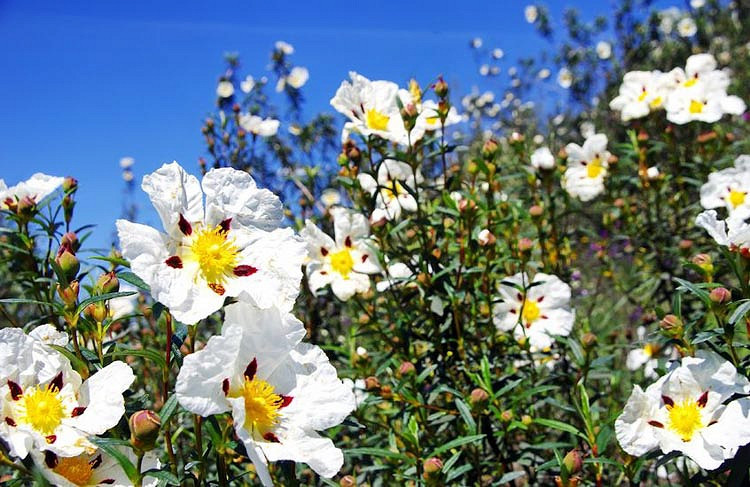
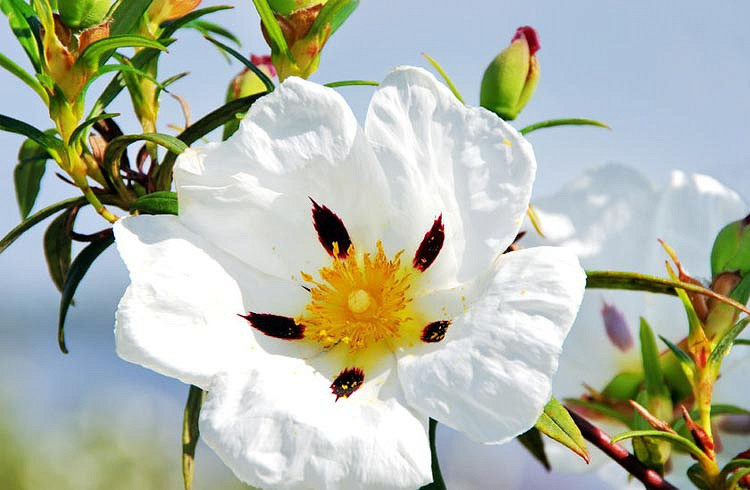 This image shows a cistus ladanifer plant in full bloom. The plant has white flowers with yellow stamens. The leaves are dark green and have a slightly serrated edge.
This image shows a cistus ladanifer plant in full bloom. The plant has white flowers with yellow stamens. The leaves are dark green and have a slightly serrated edge.

 This image shows a close-up of the flowers of a cistus ladanifer plant. The flowers are white with yellow stamens. The petals are slightly overlapping and the center of the flower is filled with stamens.
This image shows a close-up of the flowers of a cistus ladanifer plant. The flowers are white with yellow stamens. The petals are slightly overlapping and the center of the flower is filled with stamens.

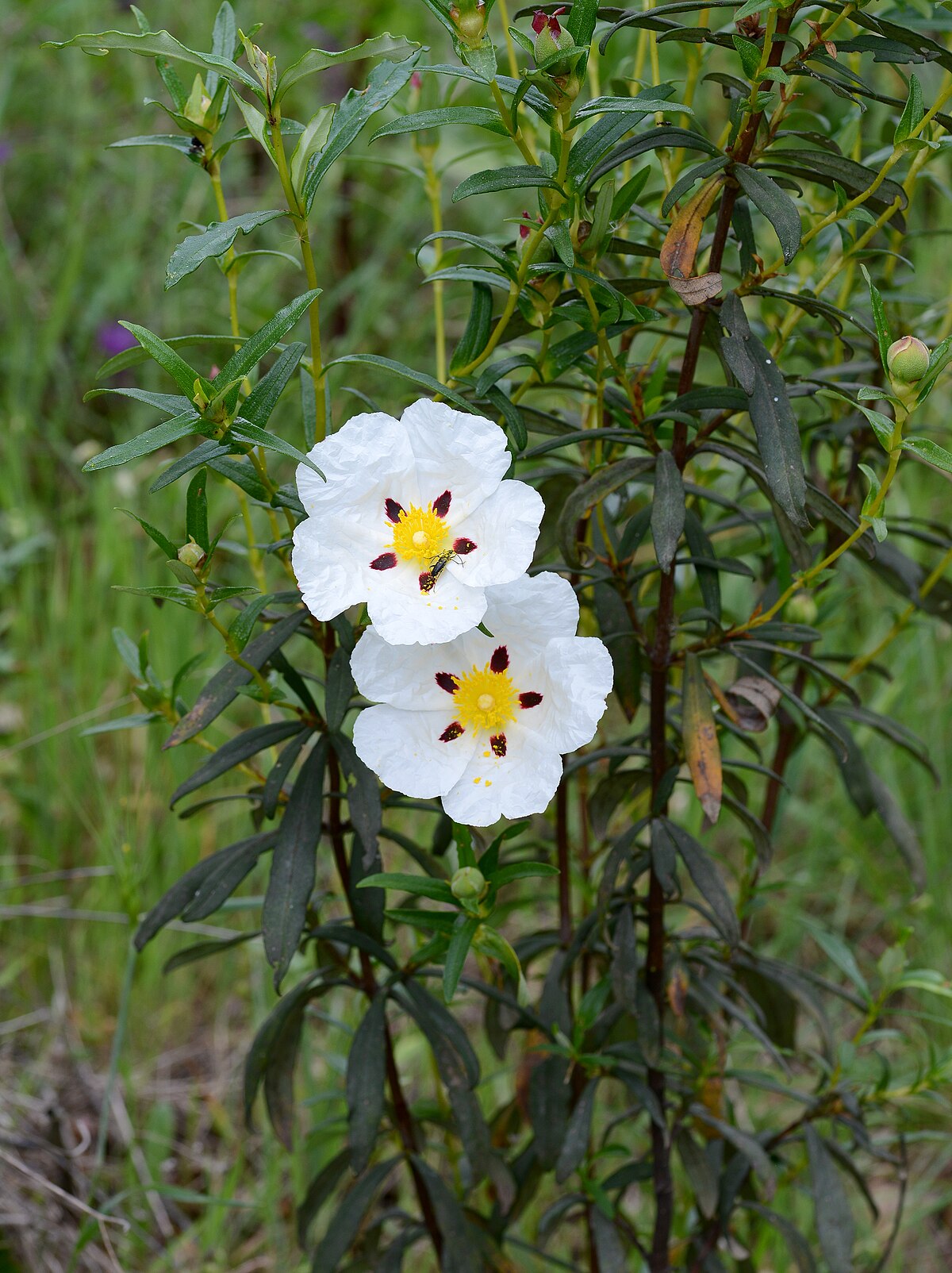 This image shows a close-up of the leaves of a cistus ladanifer plant. The leaves are dark green and have a slightly serrated edge. The leaves are covered in a fine white fuzz.
This image shows a close-up of the leaves of a cistus ladanifer plant. The leaves are dark green and have a slightly serrated edge. The leaves are covered in a fine white fuzz.
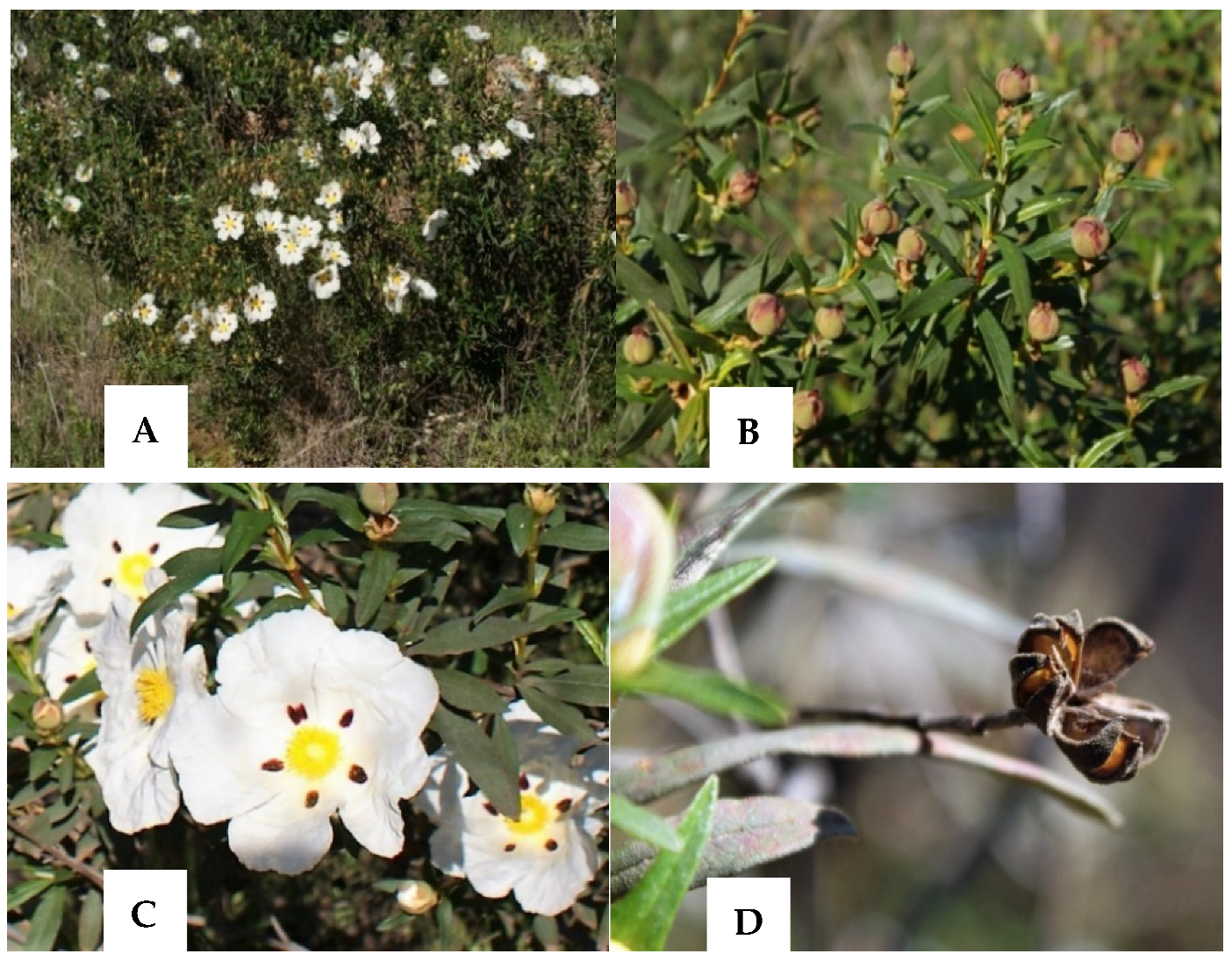
 This image shows a cistus ladanifer plant growing in a forest. The plant is surrounded by other trees and shrubs. The plant is in full bloom and the white flowers stand out against the green leaves of the surrounding plants.
This image shows a cistus ladanifer plant growing in a forest. The plant is surrounded by other trees and shrubs. The plant is in full bloom and the white flowers stand out against the green leaves of the surrounding plants.

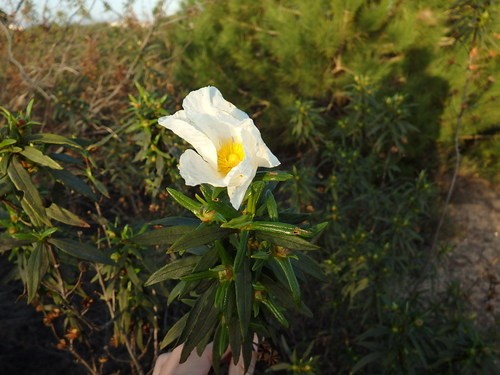 This image shows a cistus ladanifer plant growing in a meadow. The plant is surrounded by wildflowers and grasses. The plant is in full bloom and the white flowers stand out against the green grass and other wildflowers.
This image shows a cistus ladanifer plant growing in a meadow. The plant is surrounded by wildflowers and grasses. The plant is in full bloom and the white flowers stand out against the green grass and other wildflowers.

This image shows a cistus ladanifer plant growing in a rocky area. The plant is surrounded by rocks and other small plants. The plant is in full bloom and the white flowers stand out against the gray rocks and other plants.

 This image shows a cistus ladanifer plant growing in a coastal area. The plant is surrounded by other plants and shrubs that are common in coastal areas. The plant is in full bloom and the white flowers stand out against the blue sky and the green ocean.
This image shows a cistus ladanifer plant growing in a coastal area. The plant is surrounded by other plants and shrubs that are common in coastal areas. The plant is in full bloom and the white flowers stand out against the blue sky and the green ocean.

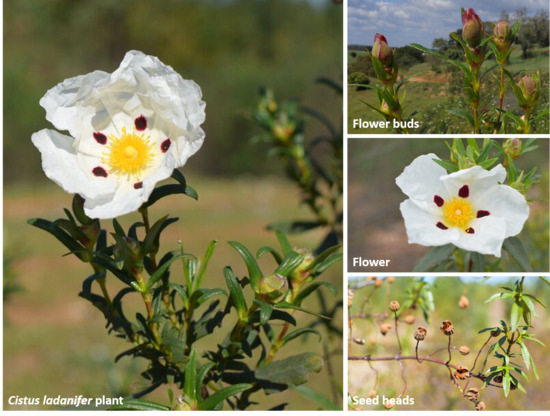 This image shows a cistus ladanifer plant in a winter scene. The plant is no longer in bloom, but the leaves are still green. The plant is covered in a fine white fuzz.
This image shows a cistus ladanifer plant in a winter scene. The plant is no longer in bloom, but the leaves are still green. The plant is covered in a fine white fuzz.
/assets/plants/plant_27204/plant_27204_shoot_20190507193418.jpg)
 This image shows a cistus ladanifer plant growing in a desert. The plant is surrounded by sand and rocks. The plant is in full bloom and the white flowers stand out against the yellow sand and brown rocks.
This image shows a cistus ladanifer plant growing in a desert. The plant is surrounded by sand and rocks. The plant is in full bloom and the white flowers stand out against the yellow sand and brown rocks.
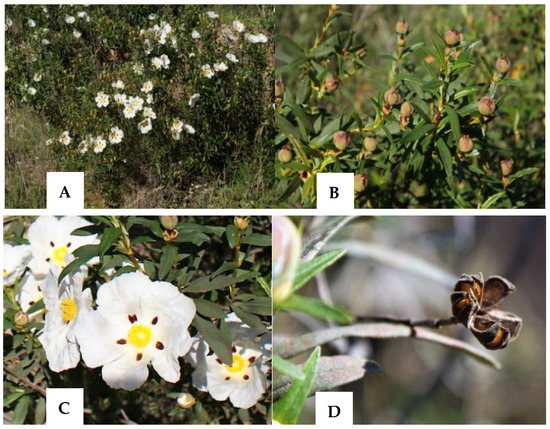
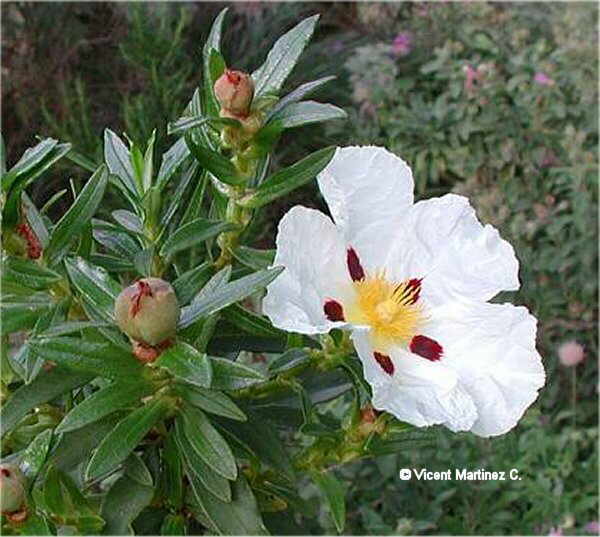 This image shows a cistus ladanifer plant growing in a botanical garden. The plant is surrounded by other plants and flowers. The plant is in full bloom and the white flowers stand out against the green leaves of the other plants.
This image shows a cistus ladanifer plant growing in a botanical garden. The plant is surrounded by other plants and flowers. The plant is in full bloom and the white flowers stand out against the green leaves of the other plants.
Post a Comment for "Cistus Ladanifer: The Fragrant Shrub That Can Thrive In Your Garden"